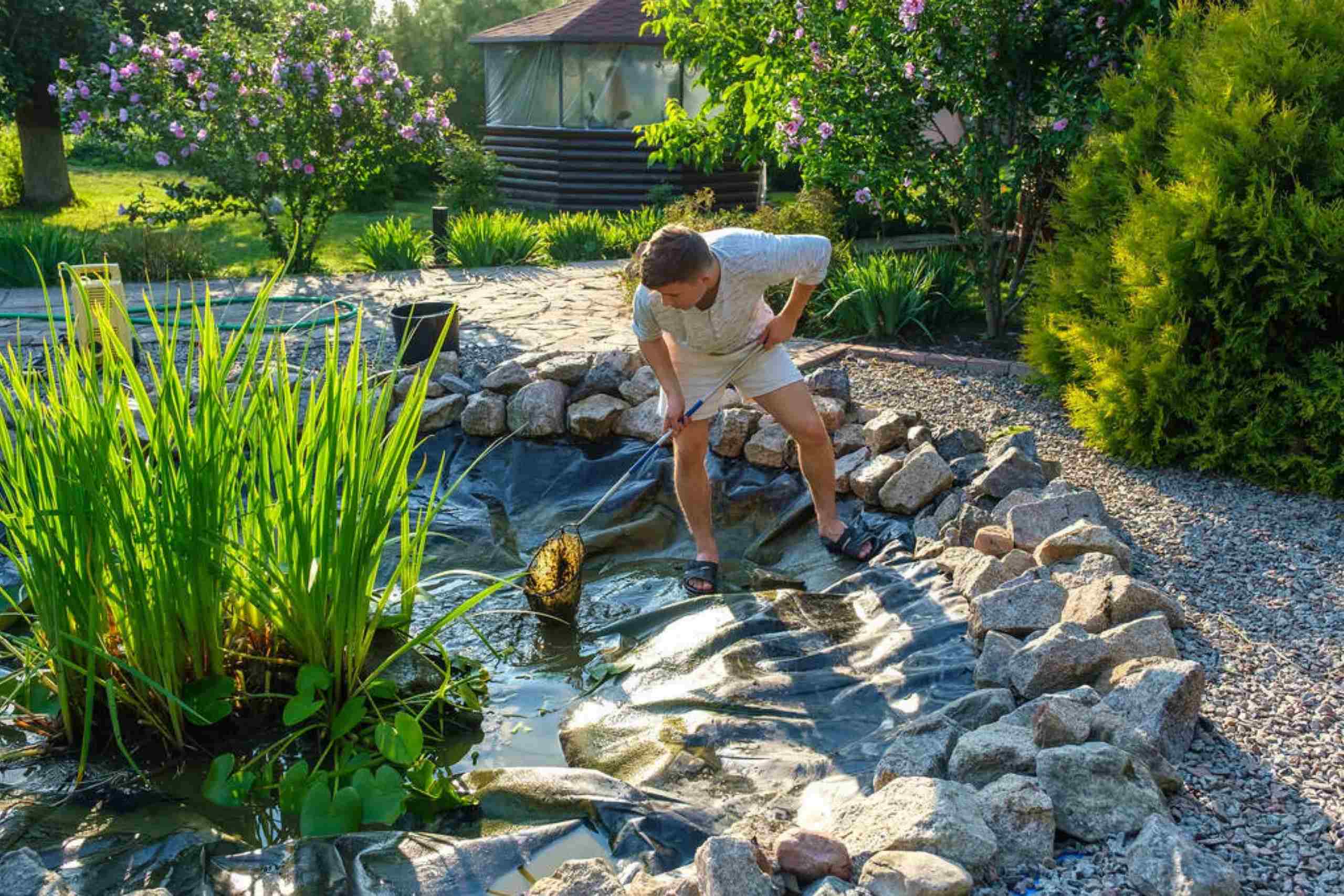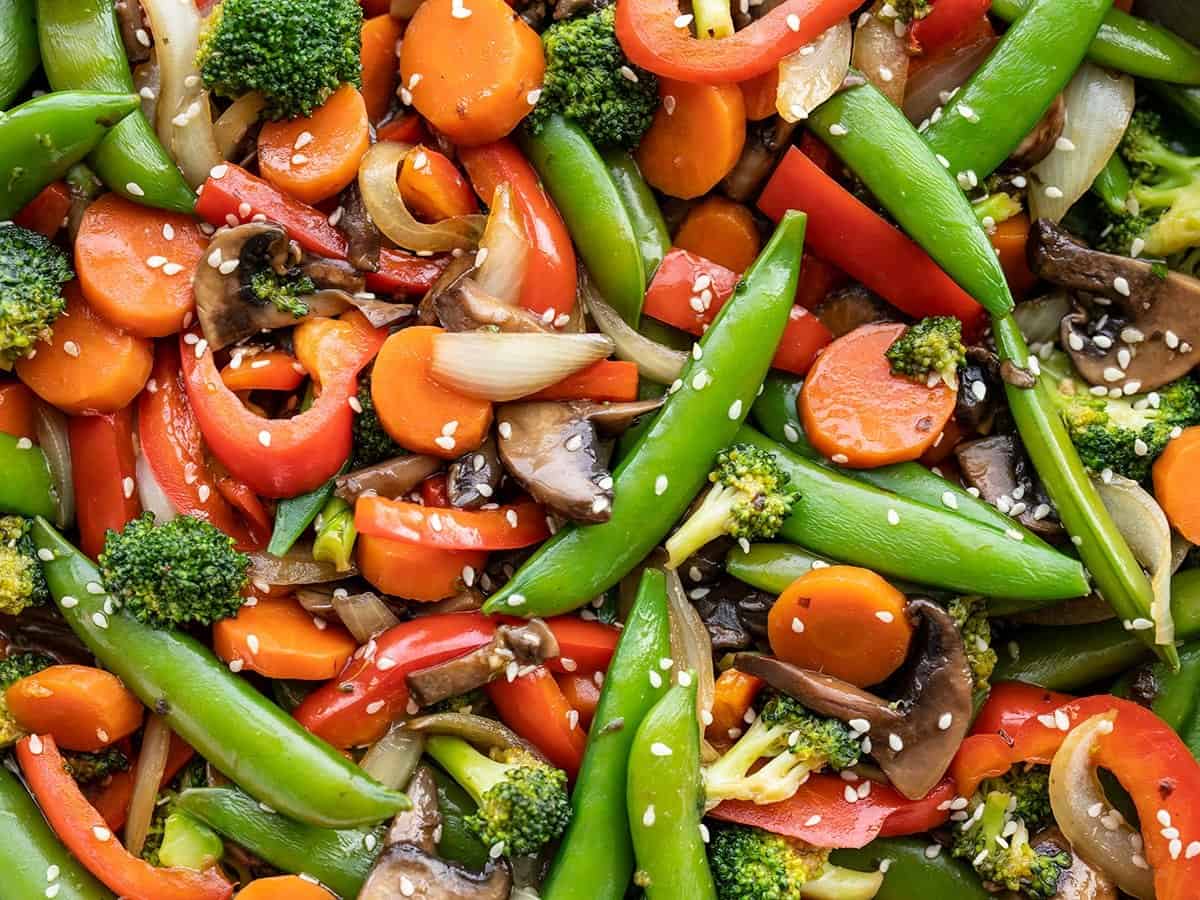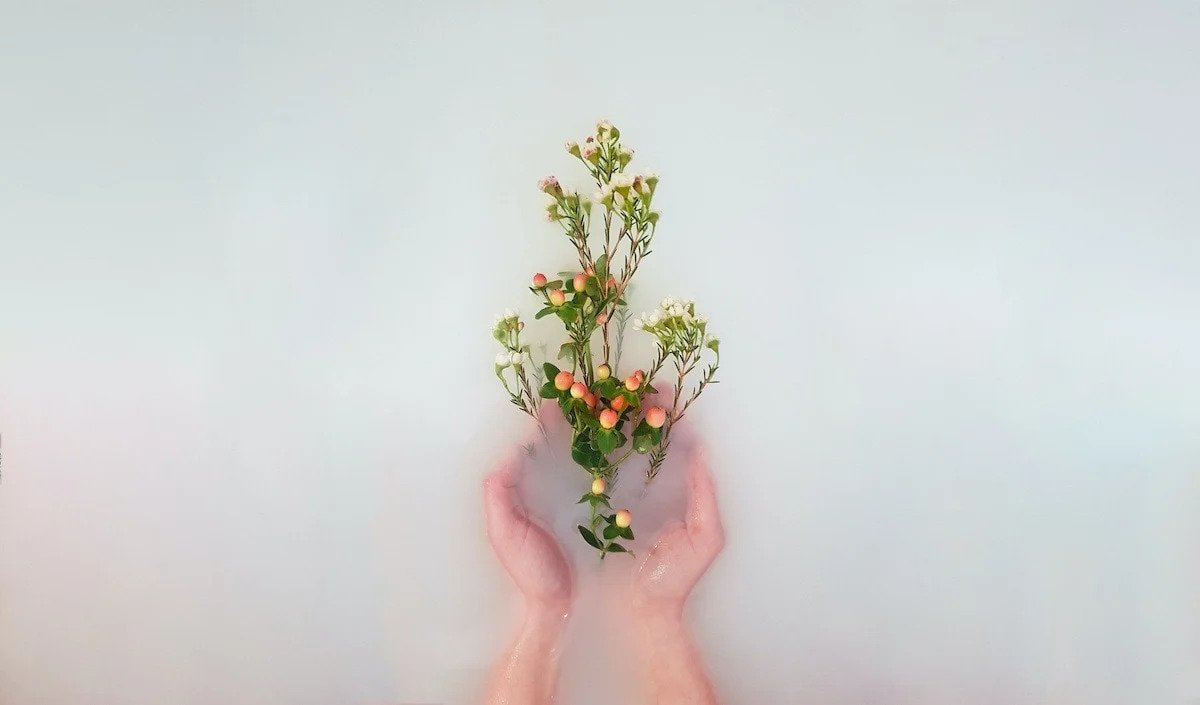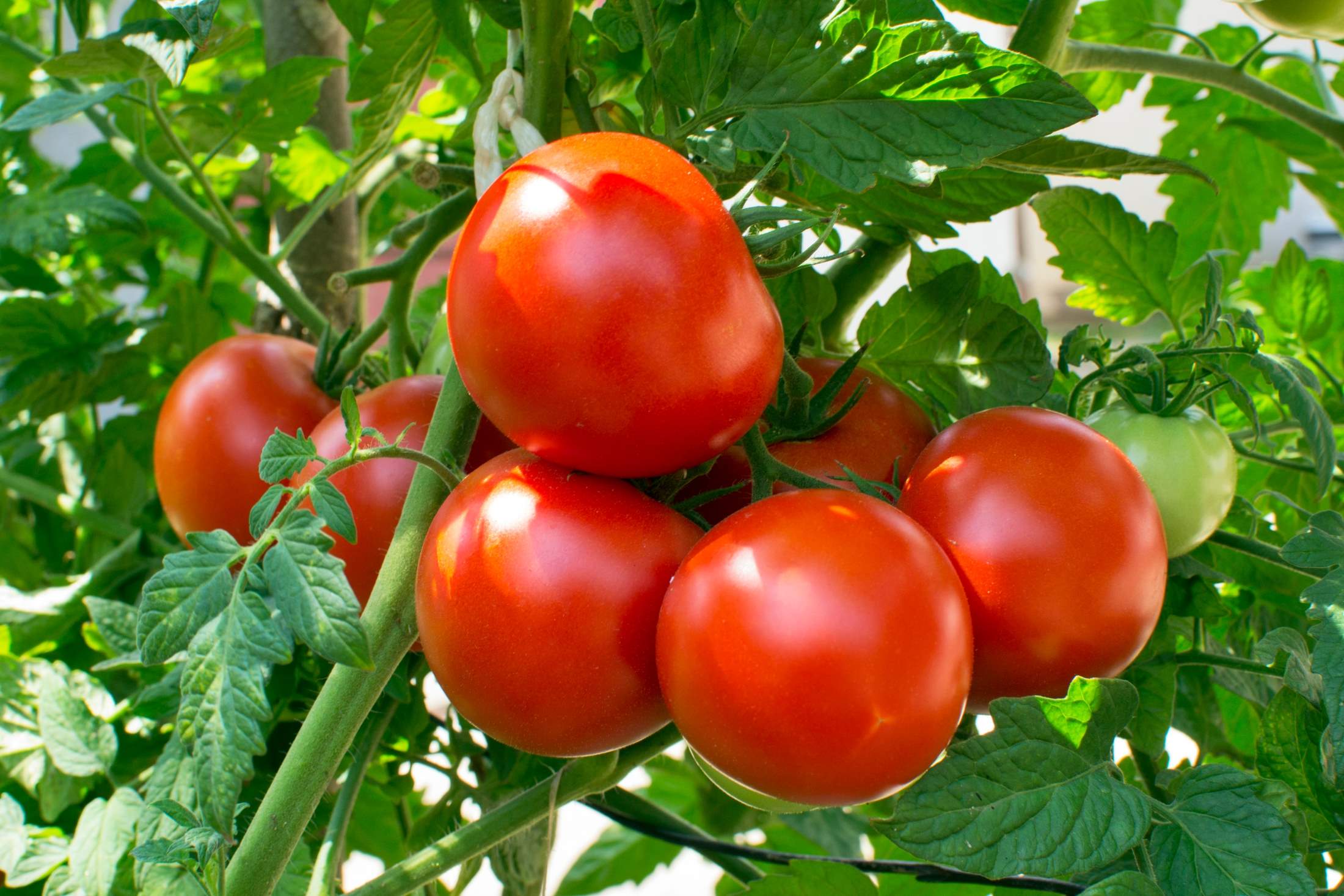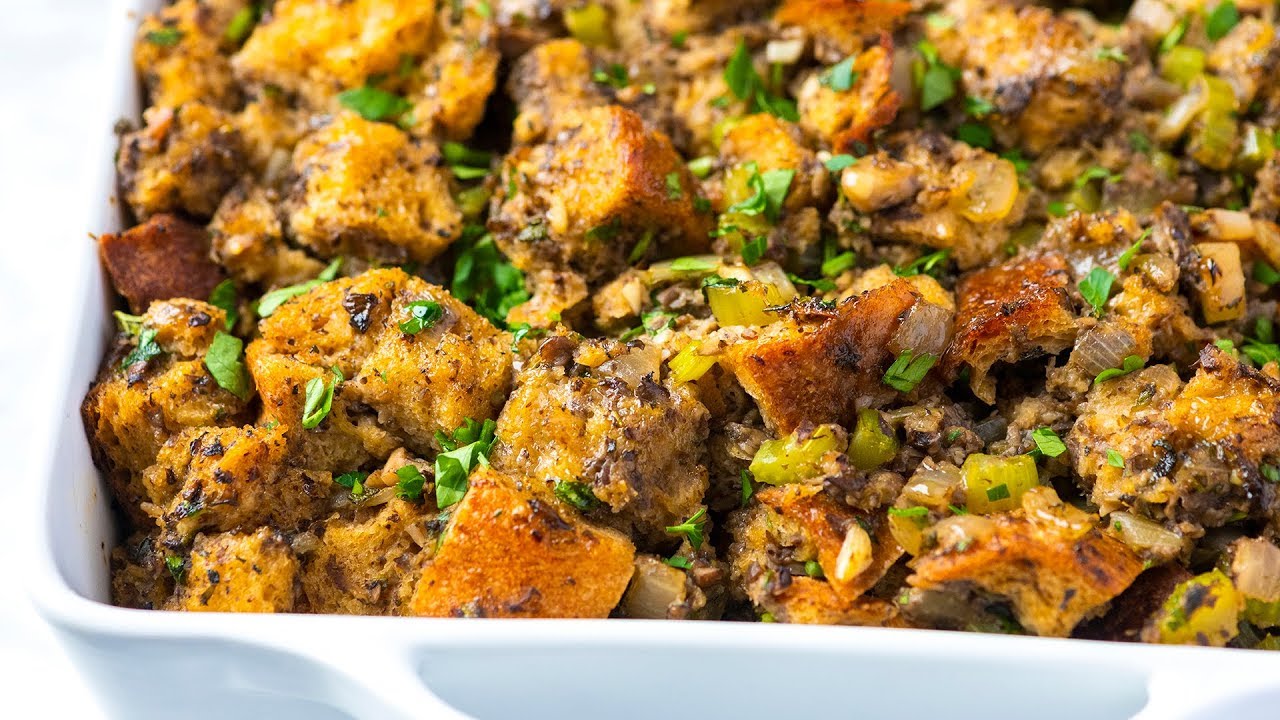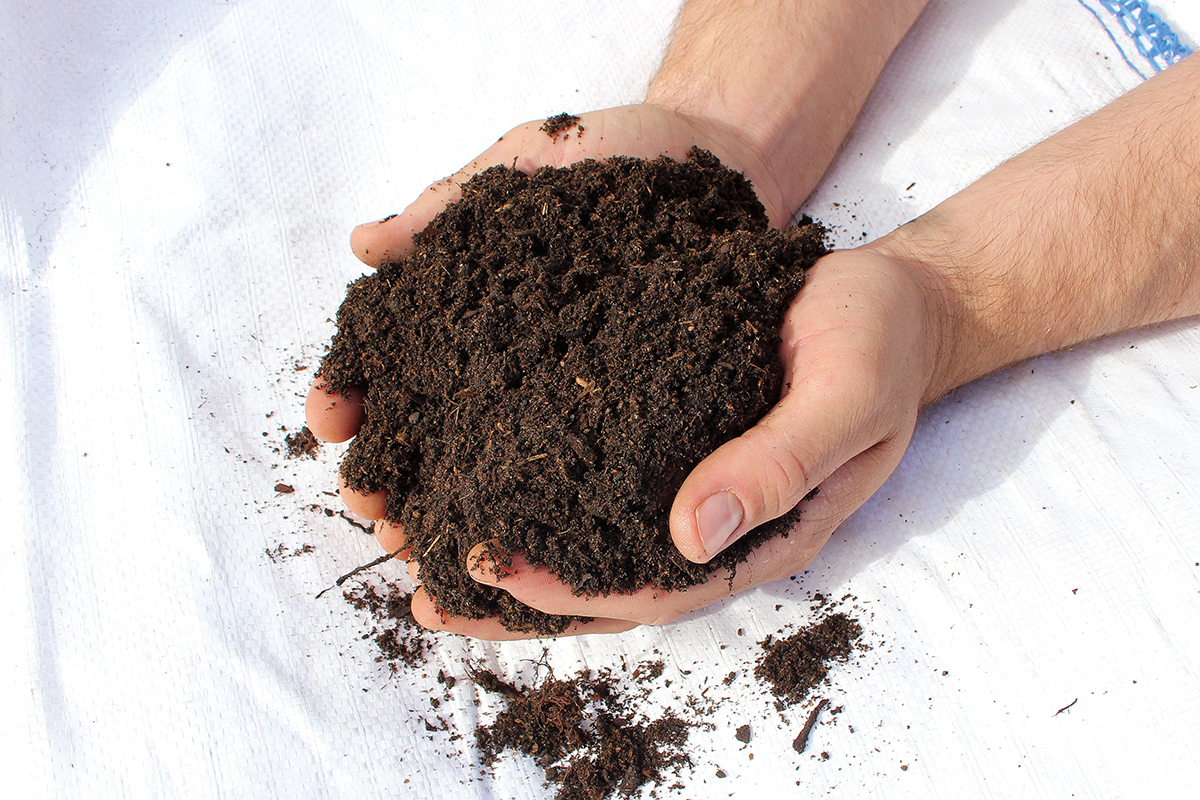Home>Gardening Tips and Tricks>Eco-Friendly Gardening>What To Put In Compost Pile
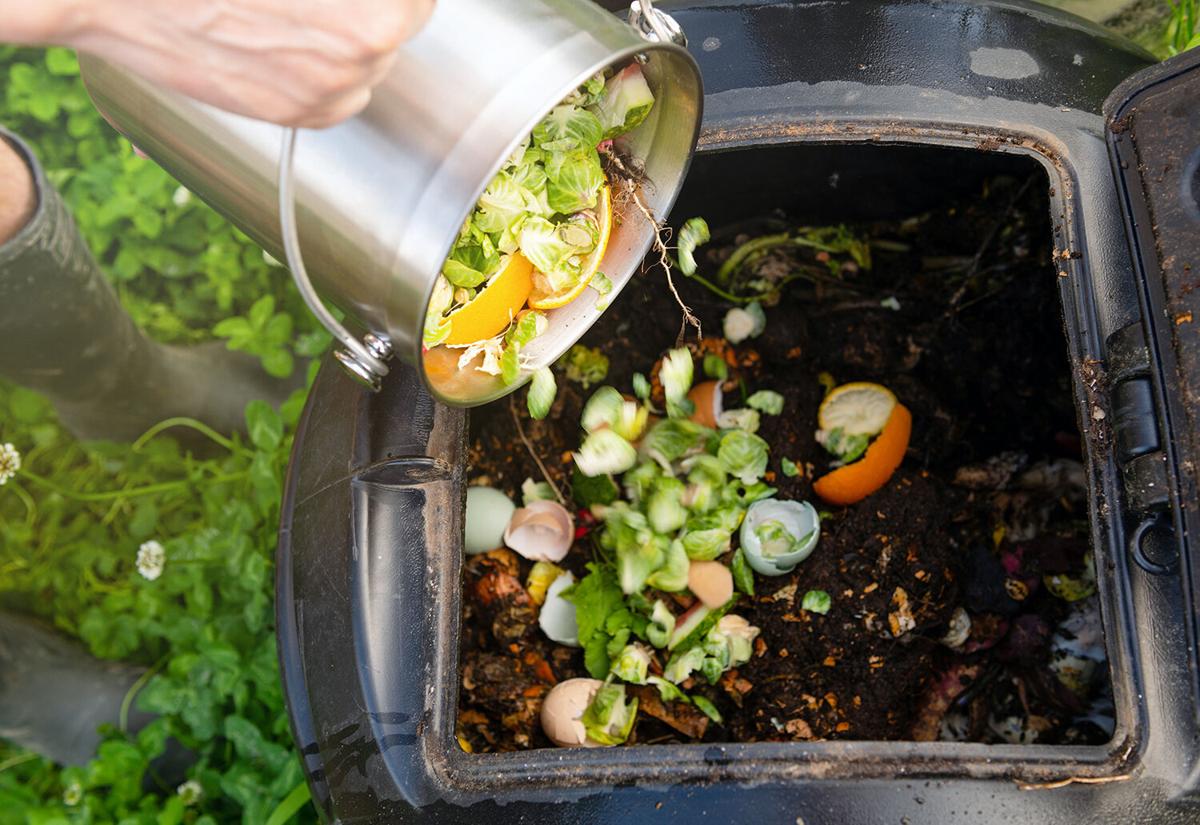

Eco-Friendly Gardening
What To Put In Compost Pile
Modified: January 22, 2024
Looking for eco-friendly gardening tips? Discover what to put in your compost pile for a thriving and sustainable garden. Start composting today!
(Many of the links in this article redirect to a specific reviewed product. Your purchase of these products through affiliate links helps to generate commission for Chicagolandgardening.com, at no extra cost. Learn more)
Table of Contents
- Introduction
- The Basics of Composting
- Greens: Nitrogen-Rich Materials
- Browns: Carbon-Rich Materials
- Food Scraps and Kitchen Waste
- Yard Waste and Plant Trimmings
- Shredded Paper and Cardboard
- Animal Manure and Bedding
- Avoid These Items in Your Compost Pile
- Maintaining and Turning the Compost Pile
- Troubleshooting Common Composting Issues
- Harvesting and Using Finished Compost
- Conclusion
Introduction
Composting is a fantastic way to reduce waste and create nutrient-rich soil for your garden. By making use of organic materials and the natural processes of decomposition, you can turn kitchen scraps, yard waste, and other biodegradable materials into a valuable resource that will help your plants thrive.
Eco-friendly gardening practices like composting not only benefit your garden but also have a positive impact on the environment. By diverting organic waste from landfills, you reduce the production of methane, a potent greenhouse gas. Additionally, incorporating compost into your soil helps retain moisture, reduces the need for synthetic fertilizers, and promotes the growth of beneficial organisms.
In this article, we will explore the essentials of composting and provide you with valuable insights on what to include in your compost pile. By understanding the different types of materials suitable for composting, you can create a balance of nitrogen-rich “greens” and carbon-rich “browns” that will result in nutrient-dense compost.
Whether you’re a seasoned gardener looking to improve your composting techniques or a beginner eager to start your first compost pile, this guide will provide you with the knowledge and practical tips you need to effectively compost your organic waste.
The Basics of Composting
Composting is the process of breaking down organic materials into a nutrient-rich substance known as compost. It is a natural, sustainable way to recycle organic waste and create a valuable resource for gardening.
To start composting, you’ll need a compost bin or pile where you can place your organic materials. This can be as simple as a designated area in your backyard or a specially designed compost bin. The size of your composting system will depend on the amount of waste you generate and the space available.
The key to successful composting is creating the right balance of ingredients. This involves incorporating a mix of “greens” and “browns” into your compost pile. Greens, which are high in nitrogen, provide essential nutrients for the microorganisms that break down the organic matter. Browns, on the other hand, are carbon-rich materials that help create structure in the compost pile and prevent it from becoming too wet and compacted.
Examples of greens include fruit and vegetable scraps, coffee grounds, grass clippings, and green plant trimmings. Browns, on the other hand, consist of dry leaves, straw, shredded paper, and cardboard. It’s important to maintain a balance of approximately 50% greens and 50% browns in your compost pile.
In addition to greens and browns, you can also include other materials such as food scraps, yard waste, shredded paper, cardboard, and even animal manure. However, it’s important to avoid adding meat, dairy products, and oily or greasy substances, as they can attract pests and slow down the composting process.
Once you have gathered your compostable materials, it’s time to start building your compost pile. Begin by laying down a layer of browns as a base, followed by a layer of greens. Repeat this process, alternating layers of browns and greens, until you have used up all your materials. It’s a good idea to periodically sprinkle your compost pile with water to keep it moist, but not waterlogged.
As the organic materials decompose, the compost pile will generate heat. This is a sign that the microorganisms are actively breaking down the matter. To facilitate the decomposition process, it’s essential to turn and aerate the pile regularly. This can be done by using a pitchfork or a compost turning tool to mix the materials and introduce fresh oxygen.
Composting is not an instantaneous process. It takes time for the materials to break down and transform into rich, dark compost. Depending on various factors such as weather conditions and the size of your compost pile, the composting process can take anywhere from a few months to a year. Monitoring the temperature, moisture levels, and regularly turning the pile will help ensure optimal composting conditions.
In the next sections, we’ll delve deeper into the specific materials you can put in your compost pile, as well as the maintenance and troubleshooting aspects of composting. By following these guidelines, you’ll be well on your way to creating nutrient-rich compost that will enrich your garden and contribute to sustainable gardening practices.
Greens: Nitrogen-Rich Materials
When it comes to composting, “greens” refer to nitrogen-rich materials that provide essential nutrients for the microorganisms responsible for breaking down organic matter. These materials are typically moist, green, and have a high nitrogen content, making them ideal for accelerating the composting process.
Some common examples of greens include fruit and vegetable scraps, coffee grounds, tea leaves, fresh grass clippings, and green plant trimmings. These materials are excellent additions to your compost pile because they are rich in nitrogen, which is a vital element for plant growth.
Food scraps such as fruit and vegetable peels, cores, and leftover produce are great composting materials. However, avoid adding meat, fish, dairy products, or oily leftovers, as they can attract pests and slow down the decomposition process. It’s also important to chop or shred larger food scraps to speed up decomposition.
Coffee grounds are an excellent source of nitrogen and are highly sought after by composting enthusiasts. They are a byproduct of brewing coffee and can be collected from coffee shops or your own coffee maker. Sprinkle coffee grounds directly onto your compost pile, or mix them with dried leaves or shredded paper to balance the carbon-to-nitrogen ratio.
Tea leaves are another nitrogen-rich addition to your compost pile. Whether you’re an avid tea drinker or a cafe owner, be sure to save your tea bags or loose tea leaves. Simply tear open the bags or remove the tea leaves and add them to your compost bin. It’s worth noting that some tea bags may contain synthetic materials, so opt for compostable tea bags wherever possible.
Grass clippings from your lawn mowing sessions can also be added to the compost pile. Make sure the grass clippings do not contain any herbicides or pesticides that could harm the microorganisms in your compost. To ensure proper decomposition, avoid adding thick layers of grass clippings, as they tend to mat and become compacted. Mix them with other materials to promote airflow and prevent unpleasant odors.
Green plant trimmings, such as leaves, stems, and small branches, can also be composted. When pruning your plants or cleaning up your garden, collect these materials and add them to your compost pile. However, avoid adding diseased or pest-infested plant material, as you risk spreading the pests or diseases to your compost and, eventually, your garden.
Remember that it’s crucial to maintain a balance between greens and browns in your compost pile. Aim for a 50:50 ratio, by volume, of nitrogen-rich greens to carbon-rich browns. This will ensure that your compost has the right proportions of nutrients and carbon to support the microbial activity needed for successful decomposition.
In the next section, we’ll explore the other essential component of composting: “browns.” These carbon-rich materials work in tandem with greens to create a well-balanced compost pile. By understanding both greens and browns, you’ll have the knowledge to create high-quality compost for your garden.
Browns: Carbon-Rich Materials
When it comes to composting, “browns” refer to carbon-rich materials that serve as a balance to the nitrogen-rich “greens” in your compost pile. Browns are dry, fibrous materials that provide structure, airflow, and carbon to the composting process.
Examples of browns include dry leaves, straw, shredded paper, and cardboard. These materials are excellent sources of carbon and help absorb moisture, prevent the compost pile from becoming too wet and compacted, and provide aeration for the microorganisms responsible for decomposition.
One of the easiest sources of browns is dry leaves. During the fall season, collect fallen leaves from your yard or neighborhood, making sure they are free from pesticides or other chemicals. Shred the leaves to speed up decomposition and add them to your compost pile. Leaves add bulk to the pile and create air pockets, allowing for better airflow.
Straw, which is commonly used as bedding for animals, is another valuable brown ingredient for your compost pile. It provides carbon, adds structure, and helps control moisture levels. Straw is also widely available and is an excellent choice for large-scale composting operations.
Shredded paper and cardboard are readily accessible materials for composting. Instead of throwing away your paper waste, tear it into small strips or run it through a shredder. Cardboard boxes can be torn into smaller pieces or flattened before being added to the compost pile. Both shredded paper and cardboard act as a carbon source and help aerate the compost pile.
It’s important to note that not all paper products are suitable for composting. Avoid items that have been coated or treated with chemicals, such as glossy paper, colored paper, or paper with plastic coatings. Stick to plain, unbleached paper and cardboard materials.
In addition to leaves, straw, shredded paper, and cardboard, you can also add other carbon-rich materials to your compost pile. Wood chips, sawdust, and small branches or twigs are excellent choices, but be sure to avoid using treated or painted wood products, as they may contain harmful chemicals.
When adding browns to your compost pile, aim for a similar volume as your greens. Generally, a 50:50 ratio, by volume, of greens to browns is a good guideline to follow. This balance ensures that the compost pile has the right proportions of nitrogen and carbon, creating an ideal environment for decomposition.
Remember to layer your browns and greens as you build your compost pile. Start with a layer of browns as a base, add a layer of greens, and continue this alternating pattern until you have used up all the materials. This layering technique helps promote even decomposition and allows for proper airflow within the compost pile.
Understanding the importance of browns as carbon-rich materials in your compost pile is crucial for creating a well-balanced environment. By incorporating both greens and browns, you’ll be well on your way to producing nutrient-rich compost for your garden.
Food Scraps and Kitchen Waste
Food scraps and kitchen waste are valuable additions to your compost pile. By diverting these organic materials from the landfill, you can turn them into nutrient-rich compost that will benefit your garden.
When it comes to food scraps, virtually any fruit and vegetable peelings, cores, or scraps can be composted. This includes items like banana peels, apple cores, carrot tops, and onion skins. However, it’s important to avoid adding meat, fish, dairy products, or oily leftovers to your compost pile, as they can attract pests and slow down the decomposition process.
To help break down the food scraps more quickly, it’s advisable to chop or shred them into smaller pieces. This increases the surface area available for microbial activity, allowing for faster decomposition. If you have a large amount of food waste, consider keeping a small kitchen compost bin to collect the scraps before transferring them to your outdoor compost pile.
In addition to fruit and vegetable scraps, coffee grounds are another excellent addition to your compost pile. Coffee grounds are nitrogen-rich and add an extra boost for the microorganisms involved in decomposition. They are easily accessible from your own coffee maker or local coffee shops. Sprinkle coffee grounds directly onto the compost pile or mix them with other materials to ensure an even distribution.
Tea leaves are another valuable component of kitchen waste that can be composted. Whether you’re an avid tea drinker or run a café, saving the tea leaves or tea bags for composting purposes is a great way to reduce waste. Tear open the tea bags or remove the tea leaves and add them to your compost pile. However, remember to opt for compostable tea bags to avoid adding synthetic materials to your compost.
Eggshells are also compostable and add essential calcium to the compost. Before adding them to the pile, rinse the eggshells and allow them to dry. Then crush them into smaller pieces to aid in the decomposition process. Avoid adding eggs or egg-based products directly to the compost, as they can attract pests.
Avoid placing oily or greasy food scraps in your compost pile, as they can create a foul odor and attract animals. If you do have small amounts of cooking oil or grease, it’s best to dispose of them in your local waste management system.
Remember to balance the ratio of greens (nitrogen-rich materials) to browns (carbon-rich materials) in your compost pile. Food scraps are considered greens, so be sure to mix them with an equal amount of brown materials such as dry leaves, shredded paper, or cardboard. This balanced combination ensures proper decomposition and prevents the compost pile from becoming too wet or smelly.
By composting your food scraps and kitchen waste, you not only reduce the amount of waste sent to landfills but also create nutrient-rich compost that will nourish your plants and improve soil health. It’s a sustainable and eco-friendly practice that benefits both your garden and the environment.
Yard Waste and Plant Trimmings
Yard waste and plant trimmings are excellent additions to your compost pile, providing a wealth of organic material for decomposition. By composting these materials, you can recycle them into nutrient-rich compost that will benefit your garden.
When it comes to yard waste, items such as grass clippings, leaves, small branches, and twigs can all be composted. Grass clippings are a valuable source of nitrogen, but be sure to use them in moderation and mix them well with other materials to prevent compaction. Dry leaves, particularly in the fall season, are an abundant source of carbon and provide excellent bulk to the compost pile. Shred them before adding them to your compost to accelerate decomposition.
When pruning or trimming your plants, make use of the plant materials by adding them to your compost pile. Green plant trimmings such as leaves, stems, and small branches are nitrogen-rich and will contribute to the decomposition process. However, avoid adding diseased or pest-infested plant material, as it can potentially spread diseases or pests to your compost and, eventually, your garden.
It’s important to balance the ratio of yard waste and plant trimmings with other materials in your compost pile. Aim for an equal amount of carbon-rich browns and nitrogen-rich greens. This will ensure proper decomposition, prevent odors, and create high-quality compost.
Before adding yard waste and plant trimmings to your compost pile, it’s a good practice to chop them into smaller pieces. This increases the surface area available for microbial activity and speeds up the decomposition process. Use pruning shears or loppers for tougher branches, and a shredder or mower for leaves and grass clippings.
It’s worth noting that larger branches or woody materials take longer to decompose. If you have larger pieces, consider chipping them or creating a separate pile for woody debris to break down over a longer period of time.
By composting yard waste and plant trimmings, you not only reduce waste but also recycle valuable materials to nourish your garden. It’s a sustainable practice that helps improve soil health, retain moisture, and reduce the need for synthetic fertilizers.
Remember to regularly turn and aerate your compost pile to ensure even decomposition. This will help break down the yard waste and plant trimmings more efficiently, resulting in rich, nutrient-dense compost for your garden.
Shredded Paper and Cardboard
Shredded paper and cardboard are excellent carbon-rich materials to add to your compost pile. They provide structure, absorb moisture, and contribute to the overall health and balance of your compost.
When it comes to shredded paper, opt for plain, unbleached paper without glossy coatings or colored ink. This ensures that you are adding materials that are safe for composting. Shred your paper into small pieces to promote faster decomposition.
Newspaper is a commonly available source of shredded paper. Tear it into smaller strips or run it through a paper shredder to prepare it for composting. Newspaper is an effective carbon source that helps create necessary air pockets and aids in moisture control in the compost pile.
Cardboard is another valuable addition to your compost pile. Flatten and tear the cardboard boxes into smaller pieces to facilitate the decomposition process. Make sure to remove any tape or stickers, as these are not compostable. Cardboard provides structure and helps improve airflow within the pile.
Both shredded paper and cardboard act as “browns” in your compost, balancing the nitrogen-rich “greens” and contributing to the overall carbon-to-nitrogen ratio. They help prevent the compost pile from becoming too wet and compacted, ensuring healthy decomposition and reducing the chance of odors and pests.
In addition to using shredded paper and cardboard in your compost pile, they can also be used as bedding material in vermicomposting, which involves using worms to break down organic matter. Worms thrive in a mixture of shredded paper, cardboard, and food scraps, creating nutrient-rich vermicompost that can be used in your garden.
It’s important to note that moderation is key when adding shredded paper and cardboard to your compost. While they are valuable additions, they should be used in combination with other materials to maintain a well-balanced compost pile. Aim for a ratio of roughly 50% greens (such as kitchen waste or grass clippings) and 50% browns (like shredded paper and cardboard) to ensure optimal decomposition conditions.
Adding shredded paper and cardboard to your compost pile not only helps divert waste from the landfill but also creates a valuable resource for your garden. The carbon they provide helps improve soil structure, retain moisture, and enhance nutrient availability for your plants.
Make sure to layer the shredded paper and cardboard in your compost pile along with other materials. This alternating layering technique allows for proper airflow and ensures all components of the compost pile break down evenly and efficiently.
Incorporate shredded paper and cardboard into your composting routine to not only reduce waste but also create nutrient-rich compost that will nourish your garden and support sustainable gardening practices.
Animal Manure and Bedding
Animal manure and bedding are valuable additions to your compost pile, providing essential nutrients and contributing to the overall health of your compost. They add a rich source of nitrogen and help create a balanced environment for decomposition.
Manure from farm animals such as cows, horses, chickens, and rabbits is widely used in composting. It contains high levels of nitrogen, phosphorus, and potassium, which are vital nutrients for plant growth. However, it’s important to use well-aged or composted manure to avoid any risk of pathogens or excessive nutrient levels. Fresh manure can be hot and may release strong odors, so it’s best to allow it to age for several months before adding it to your compost pile.
When using animal manure in your compost, be aware of the bedding materials mixed with the manure. Bedding helps absorb moisture, provides carbon, and enhances aeration. Common bedding materials include straw, wood shavings, sawdust, and dried leaves.
Straw, a popular bedding material, is a good source of carbon and adds bulk to the compost pile. It helps maintain airflow and prevents the compost from becoming too dense. Make sure to avoid using straw that has been treated with harmful chemicals or has been exposed to pesticides.
Wood shavings provide additional carbon to the compost, but keep in mind that they decompose slowly. Mixing smaller quantities of wood shavings with other materials helps ensure proper decomposition and prevents the pile from becoming too compacted.
Sawdust, another carbon-rich material, can also be used as bedding in your compost pile. However, sawdust tends to pack down tightly, limiting airflow. To prevent this, make sure to mix it with other materials and avoid using excessive amounts.
Dried leaves can serve as both bedding material and a source of carbon. They add structure to the compost pile, improve aeration, and promote moisture retention. Shred the leaves before adding them to the pile to speed up decomposition.
When adding animal manure and bedding to your compost pile, it’s important to maintain a proper carbon-to-nitrogen ratio. Aim for a balanced mix of approximately 50% carbon-rich browns (such as bedding) and 50% nitrogen-rich greens (such as fresh manure or kitchen waste). This balance ensures that the compost pile has the right conditions for decomposition and the production of nutrient-rich compost.
Remember, animal manure should be sourced from healthy animals fed on natural diets. Avoid using manure from carnivorous animals, as their waste may contain pathogens that are not destroyed during the composting process.
By incorporating well-aged or composted animal manure and bedding into your compost pile, you add essential nutrients, improve soil fertility, and support a sustainable gardening approach. Just be sure to maintain a balanced compost pile and follow proper safety precautions when handling animal waste.
Avoid These Items in Your Compost Pile
While composting is a versatile and effective way to recycle organic materials, there are certain items that should be avoided in your compost pile. These materials can hinder the composting process, introduce pests, or potentially contaminate the resulting compost.
Meat, fish, and dairy products should not be added to your compost pile. These items can attract rodents, raccoons, and other unwanted animals, leading to a messy and potentially harmful situation. The decomposition of meat and dairy products can also generate unpleasant odors.
Oily or greasy materials, such as cooking oil or grease, should also be excluded from your compost. They can create a slimy and unpleasant environment, as well as attract pests. Instead of composting these substances, dispose of them through your local waste management system.
Black walnut leaves or twigs should be avoided when collecting materials for your compost pile. Black walnut trees release a natural herbicide called juglone, which can inhibit the growth of certain plants. The juglone can persist in compost and potentially harm your plants when used in the garden.
Similarly, avoid composting plants that have been treated with chemical pesticides or herbicides. The chemicals in these sprays can affect the microbiota in your compost pile and potentially harm beneficial organisms. It is best to discard treated plant material in your regular trash.
While composting paper products is generally encouraged, it is important to be selective. Avoid adding glossy or coated paper, as well as paper with colored ink. These materials may contain chemicals or toxins that can be harmful to your compost pile and garden. Stick to plain, unbleached paper and cardboard for composting.
Invasive weeds or plants with persistent seeds should be avoided in your compost pile. While composting can break down many weed seeds, some may survive the process and germinate when you use the compost in your garden. It’s best to dispose of these plants separately to prevent spreading them unintentionally.
Cat and dog feces should not be included in your compost pile. These waste products can contain harmful pathogens that may not be destroyed during the composting process. Additionally, pet feces may attract unwanted animals and cause unpleasant odors.
Finally, it is essential to avoid adding treated or painted wood products to your compost pile. These materials may contain harmful chemicals that can leach into your compost and impact your plants and soil. Stick with untreated, natural wood materials if you want to incorporate wood into your composting efforts.
By avoiding these items in your compost pile, you can maintain a healthy and productive composting system. Stick to organic matter that is safe, sustainable, and free from potential contaminants. Your compost will thank you, and you will be able to enjoy nutrient-rich soil and a thriving garden.
Maintaining and Turning the Compost Pile
Maintaining and turning your compost pile is crucial to ensure proper decomposition and the creation of high-quality compost. Regular maintenance helps create the optimal conditions for the microorganisms responsible for breaking down the organic materials in your compost pile.
One important factor in maintaining your compost pile is moisture. It’s essential to keep the compost pile moist, but not overly wet. The ideal moisture level is similar to that of a damp sponge. If your compost pile is too dry, it will decompose slowly. On the other hand, if it’s too wet, it may become compacted and lack the necessary oxygen for decomposition.
Monitor the moisture levels of your compost pile and adjust as needed. If the pile is too dry, you can add water during turning or sprinkle it lightly with a hose. If it’s too wet, add dry carbon-rich materials like shredded paper or dry leaves to absorb excess moisture. A well-balanced compost pile should feel moist when squeezed, but no water should drip out.
Turning your compost pile is an essential maintenance task. This process helps mix the materials, provides oxygen to the microorganisms, and speeds up decomposition. Turning the pile also ensures that all parts of the compost receive equal exposure to oxygen and moisture.
How often you turn your compost pile depends on various factors such as the size of the pile, the materials being composted, and the desired speed of decomposition. As a general guideline, aim to turn the pile every 1-2 weeks. If you have a smaller pile or are using a compost tumbler, you may need to turn it more frequently.
When turning the compost pile, use a pitchfork, garden fork, or a specialized compost turning tool. Start by moving the material from the center of the pile to the outside, and the material from the outside to the center. This process introduces fresh oxygen, ensures even decomposition, and helps break down any compacted areas.
As you turn the compost pile, take note of its overall condition. It should have a pleasant, earthy smell. If there are foul odors present, it may indicate that the pile is too wet or lacks adequate oxygen. In such cases, adjust the moisture levels or add more carbon-rich materials to improve airflow.
Periodically check the temperature of your compost pile, as it provides insight into the composting process. Ideally, the temperature should be between 120 and 160 degrees Fahrenheit (49 to 71 degrees Celsius) in the active composting zone. This indicates that the microorganisms are breaking down the materials effectively. If the temperature is lower, it may indicate that the pile needs additional turning or adjustments in moisture and carbon-to-nitrogen ratio.
It’s important to note that turning the compost pile is not necessary for all composting methods. If you’re practicing vermicomposting (composting with worms) or using a compost tumbler, turning may not be required. However, it’s still essential to monitor moisture levels and provide proper aeration for the composting process.
By maintaining and turning your compost pile, you create a hospitable environment for decomposition and maximize the efficiency of the composting process. Regular monitoring, adjusting moisture levels, and turning the pile ensure that you’ll have nutrient-rich compost to enrich your garden.
Troubleshooting Common Composting Issues
Composting is a natural process, but it’s not uncommon to encounter some challenges along the way. Understanding and addressing common issues can help you troubleshoot and maintain a healthy compost pile. Here are some common composting problems and how to overcome them:
1. Slow decomposition: If your compost pile takes longer than expected to decompose, it may be due to a lack of nitrogen or insufficient moisture. Check the carbon-to-nitrogen ratio and adjust by adding more nitrogen-rich “green” materials. Additionally, ensure that the compost pile is adequately moist, like a damp sponge, to support microbial activity.
2. Foul odors: Unpleasant smells indicate anaerobic conditions or excessive moisture. To remedy this, turn the pile more often to improve aeration and drainage. Add dry, carbon-rich materials like shredded paper or dry leaves to absorb excess moisture. Avoid adding meat, dairy, or oily scraps in order to prevent foul odors.
3. Pest problems: If pests like rats or flies are attracted to your compost pile, it could be due to the presence of meat, dairy, or oily food scraps. Eliminate these materials from your compost and consider using a compost bin with secure lids. If you’re experiencing an influx of fruit flies, cover your compost or bury food scraps deeper into the pile to discourage them.
4. Weed seeds surviving composting: While composting can kill many weed seeds, some may survive and germinate when you use the compost. To minimize this, ensure that your compost reaches a high enough temperature during decomposition (above 120°F/49°C). Applying finished compost to weed-free areas and using a mulch layer can also help suppress weed growth.
5. Excessive heat: If your compost pile becomes excessively hot, it may indicate an imbalance in the carbon-to-nitrogen ratio. Add more carbon-rich “brown” materials to balance the nitrogen content and reduce heat. Turning the pile more frequently can also help regulate the temperature by introducing fresh oxygen.
6. Lumpy or compacted compost: If your compost is clumpy or compacted, it indicates poor aeration. To improve airflow, turn the pile more frequently and incorporate bulky materials like straw or wood chips. Breaking up clumps while turning helps create a looser and more aerated compost pile.
7. Uncomposted materials: If you notice recognizable, uncomposted materials in your finished compost, it may mean that those items do not readily break down or need more time to decompose fully. Consider removing stubborn pieces or sifting the compost to separate out larger materials. Then, return the undecomposed items back to the compost pile for further processing.
8. Excessive moisture or dryness: Maintaining the right moisture level in your compost pile is crucial. If it’s too dry, add water during turning or sprinkle the pile with a hose. If it’s too wet, add dry, carbon-rich materials like shredded paper or dry leaves to absorb excess moisture and improve drainage. Regularly monitor the moisture levels and adjust as needed.
Remember, composting is a dynamic process, and it may take some experimentation to find the right balance for your specific compost pile. By troubleshooting and addressing common composting issues, you can overcome challenges and produce nutrient-rich compost for your garden.
Harvesting and Using Finished Compost
After months of patiently tending to your compost pile, the time will come to harvest and utilize the finished compost. Harvesting your compost means separating the fully decomposed material from any remaining organic matter that may need further processing.
The first step in harvesting is to stop adding new materials to the compost pile and let it sit for a few weeks to allow any remaining decomposition to finish. This dormant period also ensures that any seeds or pathogens have been thoroughly broken down.
Once the compost is ready to be harvested, you have a few options for separating the usable compost from any unfinished materials. One common method is to use a screen or sieve to sift out larger chunks. This will leave you with a fine, crumbly compost that is ready to be used in your garden.
Another harvesting method is to create separate piles or bins. Start a new compost pile adjacent to the one that’s ready for harvesting, and transfer the unfinished material to the new pile. This allows the remaining organic matter to continue decomposing while you work with the fully matured compost.
When using finished compost, there are several ways to incorporate it into your garden. You can spread a layer of compost around your plants as a top dressing, allowing the nutrients to gradually release into the soil. This helps improve soil structure, retain moisture, and provide essential nutrients for plant growth.
Another option is to mix compost into your garden beds or raised planters. Work the compost into the top few inches of soil to distribute nutrients evenly. This can help improve soil fertility, enhance root development, and support overall plant health.
Compost can also be used as an ingredient in homemade potting mixes. Combining compost with other materials such as vermiculite, perlite, and peat moss creates a nutrient-rich growing medium for starting seeds or potting plants.
In addition to garden use, compost can benefit lawns as well. Spread a thin layer of compost over your lawn and rake it in to improve soil health, enhance moisture retention, and promote a strong, vibrant turf.
Compost tea is another way to utilize your finished compost. Steep a bag of compost in water for several hours or overnight, and then use the resulting liquid as a natural fertilizer for your plants. Compost tea provides a quick boost of nutrients and beneficial microorganisms.
Remember to store any excess compost properly to maintain its quality. Keep it in a covered bin or container to prevent moisture loss and contamination.
Using your finished compost not only completes the recycling loop of organic waste but also improves soil fertility, enhances plant growth, and fosters a healthy garden ecosystem. By harvesting and utilizing your matured compost, you reap the rewards of your composting efforts while promoting sustainable gardening practices.
Conclusion
Composting is a rewarding and eco-friendly way to reduce waste, improve soil health, and promote sustainable gardening practices. By harnessing the power of natural decomposition, you can transform kitchen scraps, yard waste, and other organic materials into nutrient-rich compost that nourishes your garden and supports a thriving ecosystem.
In this comprehensive guide to eco-friendly gardening through composting, we explored the basics of composting, including the importance of balancing greens and browns, and the inclusion of food scraps, yard waste, shredded paper, cardboard, animal manure, and bedding. We also highlighted the importance of avoiding items like meat, dairy, oily scraps, treated wood, and invasive weeds.
We discussed the essential steps in compost maintenance, including monitoring moisture levels, regular turning of the pile, and troubleshooting common issues such as slow decomposition, foul odors, pest problems, and excessive heat. By understanding and addressing these challenges, you can maintain a healthy and productive compost pile.
Lastly, we covered the process of harvesting and utilizing finished compost, from sifting and separating to incorporating the nutrient-rich compost into your garden beds, lawns, or potting mixes. We also introduced the concept of compost tea, a liquid fertilizer derived from steeping compost in water.
Through composting, you not only divert organic waste from the landfill but also contribute to the creation of a sustainable and thriving garden ecosystem. Composting not only enriches your soil but also reduces the need for chemical fertilizers, improves water retention, and supports beneficial organisms.
As you embark on your composting journey, remember that it may take some experimentation and adjustment to find the right balance for your specific compost pile. Patience, monitoring, and regular maintenance will lead to the creation of high-quality compost that will benefit your plants and the environment.
By incorporating the principles and practices outlined in this guide, you can become an eco-friendly gardener with a sustainable approach to waste reduction and soil enrichment. Embrace the power of composting and watch as your garden flourishes with vitality and abundance.
